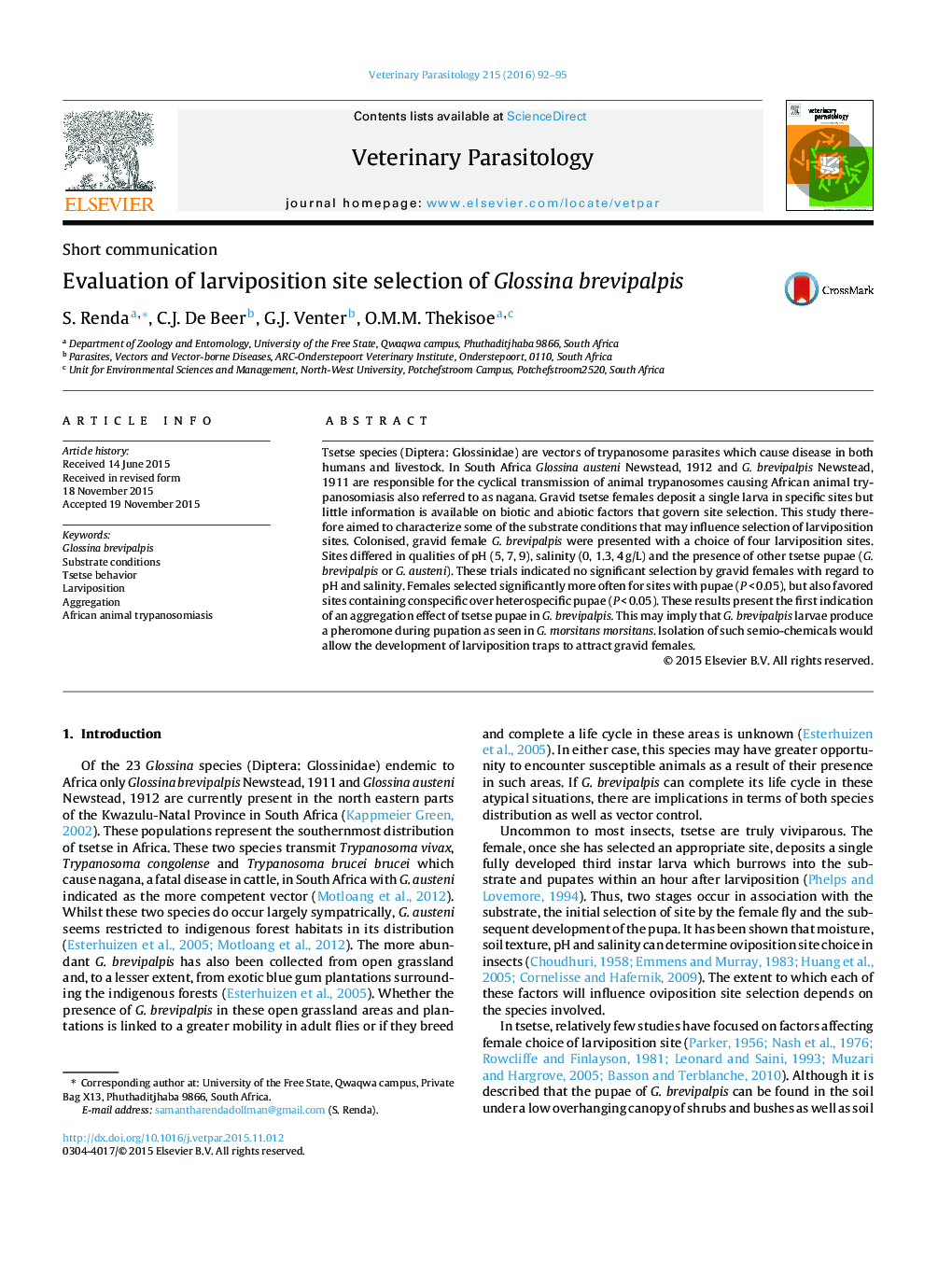| کد مقاله | کد نشریه | سال انتشار | مقاله انگلیسی | نسخه تمام متن |
|---|---|---|---|---|
| 2469863 | 1555661 | 2016 | 4 صفحه PDF | دانلود رایگان |
• Larviposition site selection of gravid Glossina brevipalpis flies was tested under laboratory conditions.
• Response to the factors salinity, pH and presence of other pupae were tested for.
• Significant (P < 0.05) selection was found for sites containing conspecific and heterospecific pupae.
• No significant selection effect was detected for sites which varied in factors of pH or salinity.
Tsetse species (Diptera: Glossinidae) are vectors of trypanosome parasites which cause disease in both humans and livestock. In South Africa Glossina austeni Newstead, 1912 and G. brevipalpis Newstead, 1911 are responsible for the cyclical transmission of animal trypanosomes causing African animal trypanosomiasis also referred to as nagana. Gravid tsetse females deposit a single larva in specific sites but little information is available on biotic and abiotic factors that govern site selection. This study therefore aimed to characterize some of the substrate conditions that may influence selection of larviposition sites. Colonised, gravid female G. brevipalpis were presented with a choice of four larviposition sites. Sites differed in qualities of pH (5, 7, 9), salinity (0, 1.3, 4 g/L) and the presence of other tsetse pupae (G. brevipalpis or G. austeni). These trials indicated no significant selection by gravid females with regard to pH and salinity. Females selected significantly more often for sites with pupae (P < 0.05), but also favored sites containing conspecific over heterospecific pupae (P < 0.05). These results present the first indication of an aggregation effect of tsetse pupae in G. brevipalpis. This may imply that G. brevipalpis larvae produce a pheromone during pupation as seen in G. morsitans morsitans. Isolation of such semio-chemicals would allow the development of larviposition traps to attract gravid females.
Journal: Veterinary Parasitology - Volume 215, 15 January 2016, Pages 92–95
